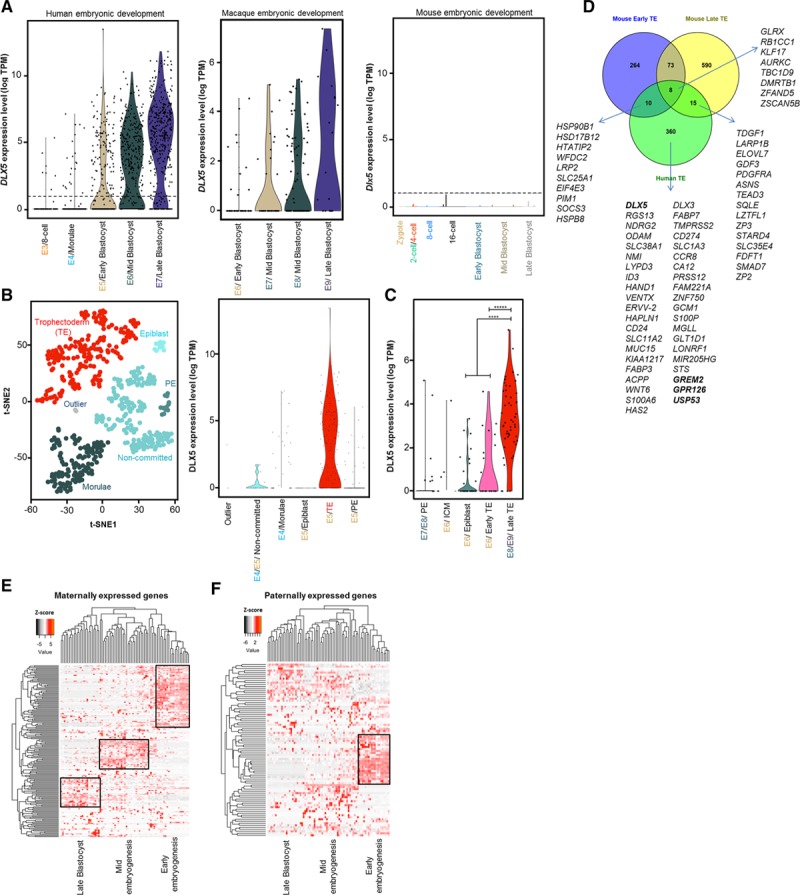Figure 6.

DLX5 expression in human, macaque, and mouse early embryonic development. A, Violin plots display the expression levels of DLX5 during different stages of human, macaque, and mouse early embryonic development. In humans, DLX5 starts to be expressed at embryonic day (E) E4/E5 stage of development. In macaques, DLX5 is expressed at E6 stage. Dlx5 is not expressed in mouse preimplantation embryo. B, Single-cell transcriptome analysis of human preimplantation embryo reveals trophectoderm (TE)-specific DLX5 expression. t-SNE analysis on human 353 single cells from E4 to E5 stages when inner cell mass (ICM) and trophectoderm split from Morulae. We defined clusters of cell populations to identify genes expressing exclusively in those clusters. We defined the cell type for each cluster according to the known markers. C, Single-cell transcriptome analysis of macaque preimplantation embryo demonstrates enriched DLX5 expression in the late trophectoderm. *****P=2.602E−12, ****P=1.387E-06, Wilcoxon test. D, Comparative analysis between human and mouse trophectoderm markers. For human trophectoderm markers, genes with log2-fold change >3 are shown. Single-cell transcriptome analysis of human embryogenesis for maternally (E) and paternally (F) expressed genes. Clustering analysis of imprinted genes expressed during early (oocyte, zygote, 2-cell, and 4-cell stage) and mid (8-stage, Morulae) embryogenesis and late blastocyst (179 of 257 maternally expressed genes, 86 of 150 paternally expressed genes). PE indicates primitive endoderm; TPM, transcripts per million; and t-SNE, t-distributed stochastic neighbor embedding.
